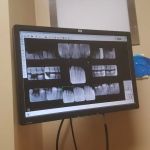How to Recognize Signs of a Tooth Infection in Children
As a parent, one of the most concerning issues you may face is noticing that your child has a tooth infection. It's not always easy to recognize the symptoms, especially in younger children who may not be able to verbalize what they're feeling. However, it's important to catch these signs early to prevent further complications, such as the spread of infection or even tooth loss. In this article, we'll explore how to recognize the signs of a tooth infection in children and what steps you can take to ensure their dental health is properly cared for.
1. Understanding Tooth Infections in Children
Tooth infections, or abscesses, are caused when bacteria invade the tooth due to untreated cavities, gum disease, or injury. The infection can spread to the surrounding tissues, causing pain and swelling. In children, a tooth infection is often related to cavities that have progressed to the point of infection. Understanding how these infections develop and what to look out for can help you get your child the treatment they need in time.
What Causes Tooth Infections in Children?
- Untreated cavities that allow bacteria to penetrate the tooth
- Trauma or injury to the tooth that causes cracks or breaks, letting bacteria enter
- Poor dental hygiene leading to plaque buildup and gum disease
2. Key Signs of a Tooth Infection in Children
Recognizing the signs of a tooth infection early can make a big difference in preventing the infection from spreading. Here are some of the most common symptoms of tooth infections in children:
1. Persistent Tooth Pain
One of the most obvious signs of a tooth infection is tooth pain. Your child may complain of a throbbing or sharp pain that doesn't go away. This pain is often exacerbated by chewing or when the tooth is touched. If your child has pain that is persistent and severe, it may indicate an infection.
2. Swelling in the Gums or Jaw
Infected teeth can cause the surrounding gums or jaw to swell. If you notice swelling around your child’s tooth or gums, this could be a sign of infection. Swelling may be more noticeable near the site of the infected tooth, but it can also extend to the jaw, making it painful for your child to eat or talk.
3. Pus or Abscess Around the Tooth
If the infection is severe, you may notice pus around the infected tooth. Pus is a sign that the body is fighting the infection, and its presence indicates that the infection has progressed to a more serious stage. This is often accompanied by a bump or abscess near the infected tooth that may be painful to the touch.
4. Bad Breath or Unpleasant Taste
Bad breath (halitosis) and a foul taste in the mouth can also be signs of a tooth infection. The bacteria causing the infection can lead to a bad odor, especially if there is an abscess. If your child’s breath smells sour or metallic, it may be due to an infection in the tooth or gums.
5. Fever or General Malaise
Infections in the body often cause fever as the immune system fights back. If your child has a fever along with tooth pain or swelling, it’s likely that the infection has spread. You may also notice that your child is feeling generally unwell or sluggish, which is another sign of a systemic infection.
3. How to Address a Tooth Infection in Children
Once you recognize the signs of a tooth infection, it’s essential to seek prompt dental care. Delaying treatment can lead to more serious complications, such as the spread of infection to other parts of the body, or the need for tooth extraction. Here’s what you can do:
1. Visit the Dentist Immediately
As soon as you notice any signs of a tooth infection, make an appointment with your child’s dentist. The dentist will evaluate the infection and may prescribe antibiotics to help clear up the infection. In some cases, your child may need a root canal or tooth extraction to remove the infected tissue.
2. Manage Pain at Home
Until you can get to the dentist, you can manage your child's pain at home. Over-the-counter pain relievers such as ibuprofen or acetaminophen can help alleviate the discomfort. Be sure to follow the recommended dosages based on your child’s age and weight. Applying a cold compress to the outside of the mouth can also reduce swelling and provide some relief.
3. Maintain Good Oral Hygiene
It’s essential to continue practicing good oral hygiene, even if your child has a tooth infection. Encourage them to brush and floss gently, avoiding the infected area. Keeping the mouth clean can help prevent the infection from worsening and may even help speed up recovery.
4. Preventing Future Tooth Infections in Children
Once the infection is treated, it’s important to take steps to prevent future infections. Good oral hygiene is key to keeping your child’s teeth and gums healthy. Here are some preventive measures to consider:
- Encourage your child to brush their teeth at least twice a day with fluoride toothpaste.
- Make sure they floss daily to remove plaque from between their teeth.
- Limit sugary foods and drinks that can contribute to tooth decay.
- Visit the dentist regularly for check-ups and cleanings.
If you're concerned about your child’s dental health or need advice on how to recognize the signs of a tooth infection, visit Dentistry Toothtruth for more information.







 Armendariz Family Dentistry - Bethany Armendariz5.0 (310 review)
Armendariz Family Dentistry - Bethany Armendariz5.0 (310 review) West Coast Dental of South Gate3.0 (495 review)
West Coast Dental of South Gate3.0 (495 review) Bryn Mawr Periodontal Associates, Ltd.4.0 (277 review)
Bryn Mawr Periodontal Associates, Ltd.4.0 (277 review) Dental Solutions of Bala Cynwyd4.0 (448 review)
Dental Solutions of Bala Cynwyd4.0 (448 review) Little Smiles Dental - Pediatric Dentist Worcester4.0 (801 review)
Little Smiles Dental - Pediatric Dentist Worcester4.0 (801 review) SmileLine Dental: Dr. Geeta Choudhary, DDS4.0 (87 review)
SmileLine Dental: Dr. Geeta Choudhary, DDS4.0 (87 review) The Importance of Oral Health Education During Pregnancy for a Healthy Pregnancy
The Importance of Oral Health Education During Pregnancy for a Healthy Pregnancy Best Tips for Brushing Your Teeth Properly for Healthy Gums: Essential Techniques for Oral Health
Best Tips for Brushing Your Teeth Properly for Healthy Gums: Essential Techniques for Oral Health Why Skipping Dental Checkups Can Lead to Bigger Oral Health Problems
Why Skipping Dental Checkups Can Lead to Bigger Oral Health Problems Advantages of Porcelain Dental Restorations
Advantages of Porcelain Dental Restorations How Can Diabetes Cause Tooth and Gum Problems? Preventing and Managing Oral Health Issues
How Can Diabetes Cause Tooth and Gum Problems? Preventing and Managing Oral Health Issues Healthy Habits for Promoting Good Oral Health and Hygiene: Tips for a Healthy Smile
Healthy Habits for Promoting Good Oral Health and Hygiene: Tips for a Healthy Smile